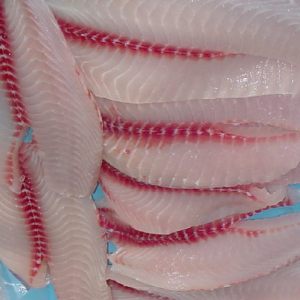
Experience Successful Tilapia Farming in Philippines
| Fri, 06 Sep 2019 - 13:26
Tilapia farming in brackish water pond
The brackish ponds in Pampanga are usually quite large with a pond of 3 - 15 ha and previously used for milkfish and shrimp production. When these ponds were used for tilapia farming, the farmers had no significant modification. For example, most ponds remain shallow, leading to higher temperatures during the summer.
High temperatures mean higher evaporation rates of water, thus, increasing salinity and accumulating organic matter. High salinity ponds always kill tilapia, especially during the stocking period. Another factor is that these very large ponds have inefficient water supply and drainage systems. Water enters and exits through the same opening. Typically, the water near the gate has the best water quality, while about half or two-thirds of the pond has poor water quality, filled with dead algae, faeces, leftovers and even dead fish. This condition is not conducive to the growth and survival of farmed fish.
Practical ways to minimize mortality and losses for farmed tilapia include:
1. Dig deep into the pond at least 1.5 to 2 meters. It will make the water more stable in temperature, salinity, and dissolved oxygen and will take longer for fish waste to accumulate. Although it may be costly in the short term, it is a long-term solution to reduce mortality and increase pond productivity.
2. Provide a separate drainage port opposite the water supply port (if possible). A 1-hectare pond with a width of 1.5 - 2 m should have a gate that can drain 750m 3 of water per hour so that up to 30% of the water can be changed during a tidal cycle when the outside water quality is good.
3. If there cannot be an additional outlet, connect two adjacent ponds by installing two gates along the dyke separating the two ponds: one gate is installed on one end of the dyke and the other. The middle dike serves as a bulkhead. At one of the gates, install a paddle wheel, propeller or pump to move pond water. This has proven to be very useful especially when the water from the outside is of poor quality and the addition of new water is not possible. Water receives more oxygen while releasing ammonia and toxic gases in the process. The rate of decomposition of organic matter increases without competing with the source of oxygen with fish.
4. Split very large ponds into small ponds. The smaller the pond, the easier it is to manage water quality. It may require some cost to do, but again, the results may offset it.
5. Provide emergency aerators, reservoirs or spare water pumps. Although this can be expensive, it is an effective way to manage water quality when there is no immediate clean water source not only during the pond culture or construction period but also in emergency situations.
6. When raising tilapia in saltwater ponds, farmers need to build and provide adapted ponds and this pond must be provided with aeration system. This is one of the most serious problems in brackish water ponds that need to be addressed. The hatcheries were not built to provide fingerlings for salt water. The acclimation to salinity should be done slowly at a maximum rate of 0.5-1 ppt per day. This also serves as a means to avoid predation from exotic birds and fish during the fry stage.
Growing tilapia in freshwater ponds
Although tilapia farming started in freshwater ponds, many farmers were not well informed about the principles of pond construction. Here are some things to be reset to minimize the risk of inclement weather:
1. Deepen the pond to a minimum of 1.5m, which makes the water temperature more stable during hot or cold seasons. Water quality degradation is also slower than in shallow ponds. If a pond owner can manage to have a depth of 2.5 or 3 meters, this is even better. Yields per hectare can be up to 66% higher.
2. In the cold season, pond temperatures quickly rise or fall, which again causes stress on farmed fish. The hatchery should have an average depth of 1.2m for the pond and not 0.6 meters as is usually recommended. And the condition of the depth of the pond must be from 1.5 to 2 meters deep.
3. Provide emergency aeration equipment, backup water sources such as deep wells, reservoirs, etc. As a precaution, when water quality declines rapidly because farmers tend not to control feeding to keep up the harvest time or take advantage of the high market prices. As a result, dead fish occur.
4. Supply nursery pond.
5. Provide physical barriers against all external animals and predators. The pond is surrounded with a net fence that has been proven effective.
Source : tepbac.com






















